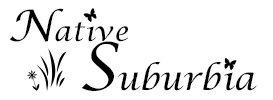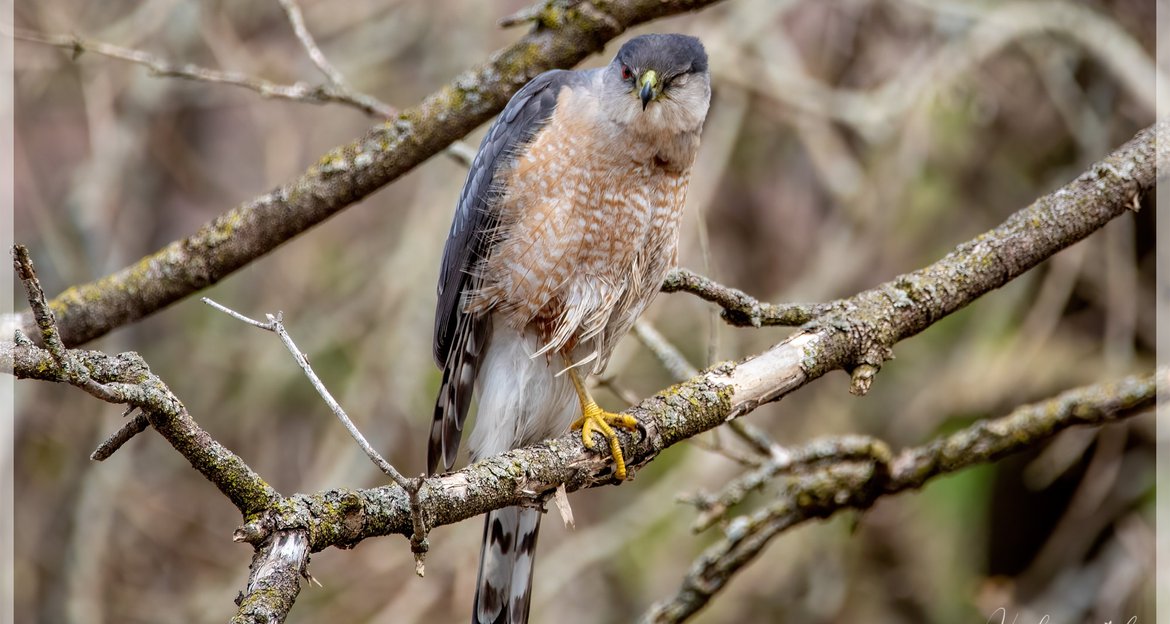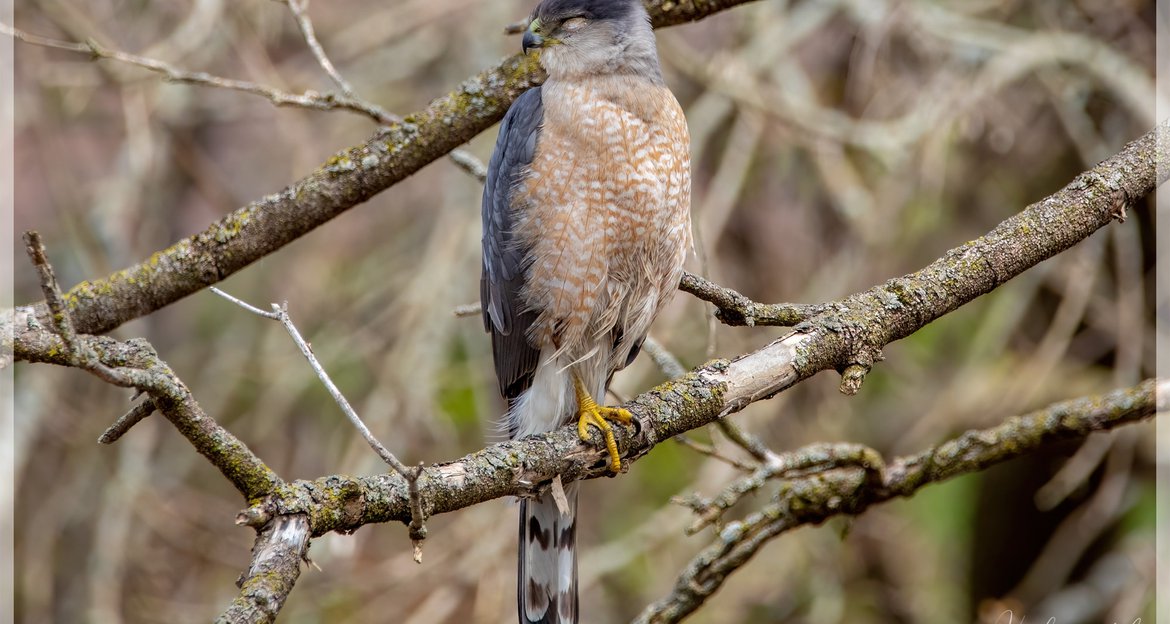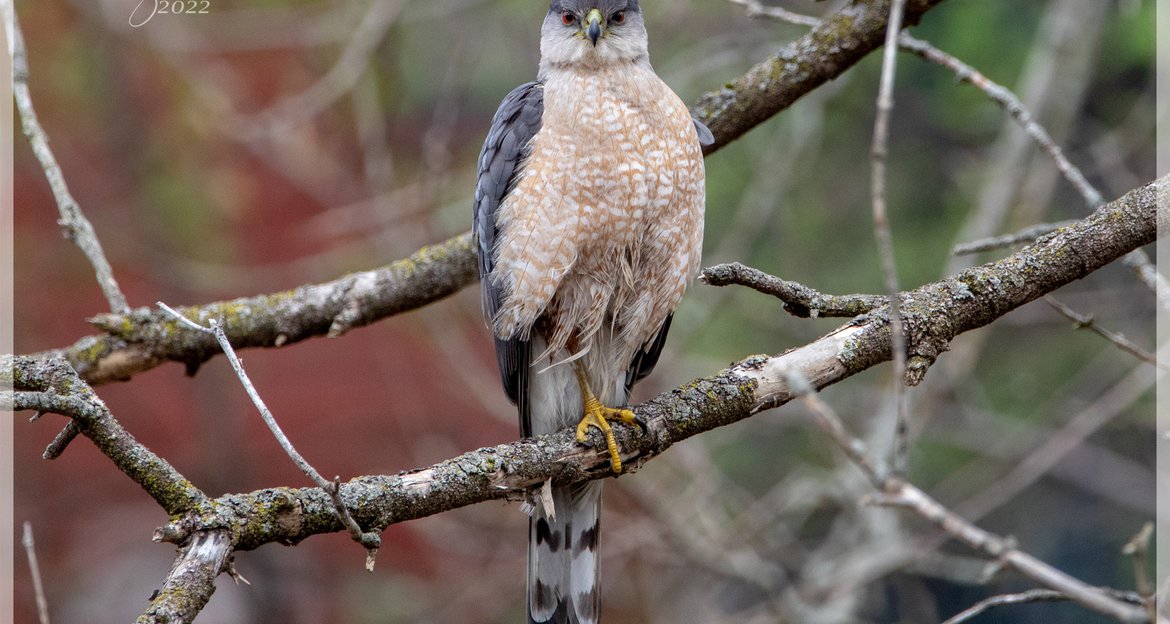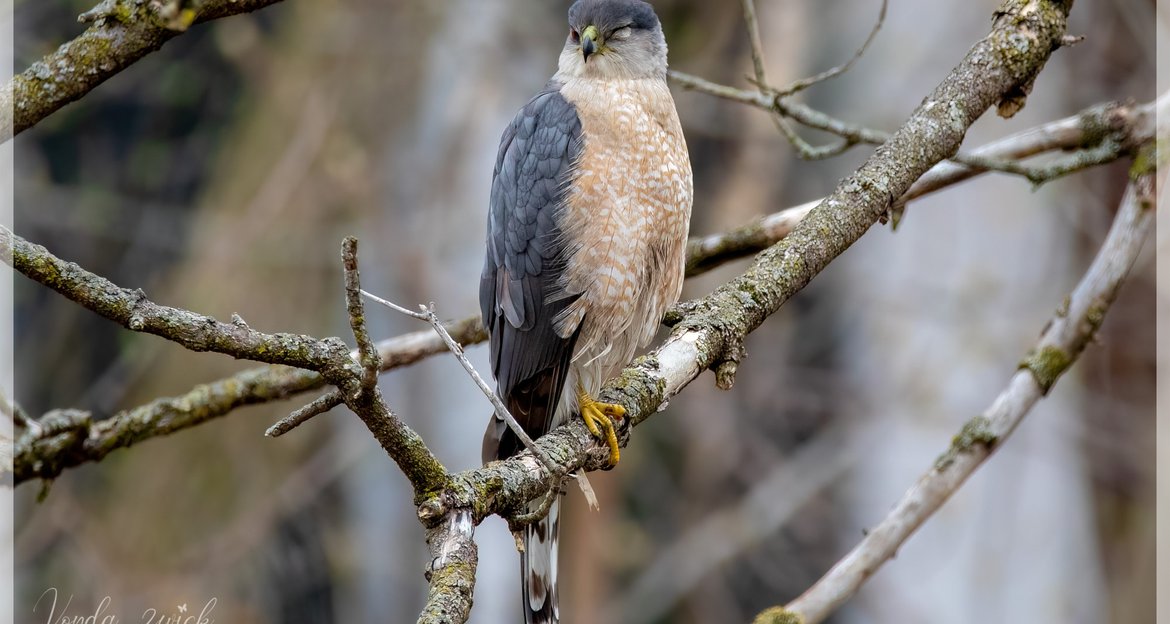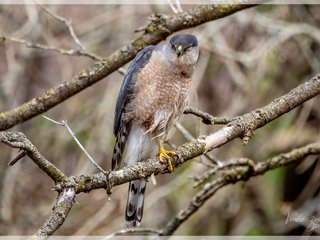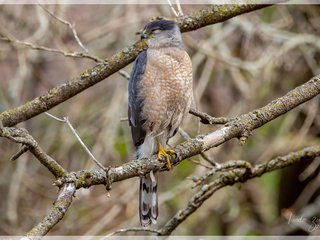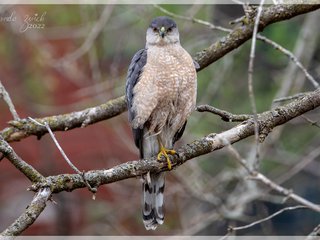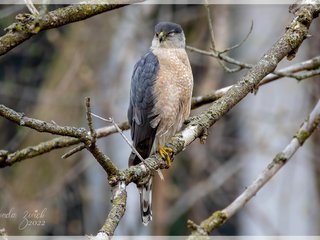What is Unihemispheric Slow-Wave Sleep?
Posted by Vonda on April 30, 2022
I happened upon this Cooper's Hawk taking a nap at Oak Hollow Park. Or I thought it was taking a nap. Because it was occasionally turning its head and when it did, I sometimes caught a glimpse of its other eye - wide open and seemingly alert. But then it would turn its head back an return to look like he was napping.
I entertained the idea briefly that the eye was injured, but it looked perfectly fine through my viewfinder. When turned away, it just looked asleep. But it would occasionally turn its head one way and the other as if it were awake. And then for one brief moment, it looked my way with both eyes open and I could see that both eyes were perfectly fine. Then it closed the one again and went back to its "nap."
It turns out, birds are capable of unihemispheric slow-wave sleep. This allows one half of their brain to go asleep, while the other half remains awake and alert. This ability is not unique to birds, but what is unique is the fact that birds seem to be able to control how much of its brain is asleep by adjusting how wide it opens its eye. This ability not only gives birds the ability to stay alert to predators while they are sleeping, but it also allows migratory species to rest during long-distance flights.
